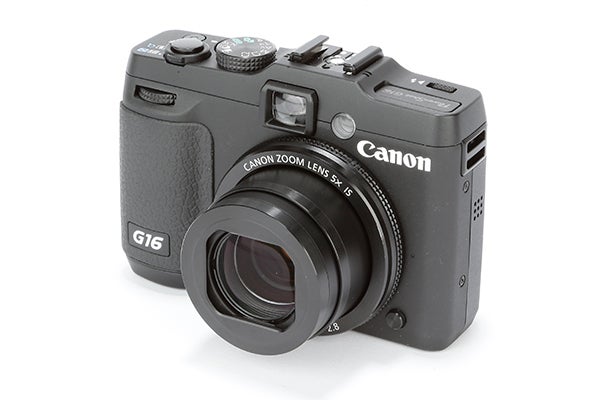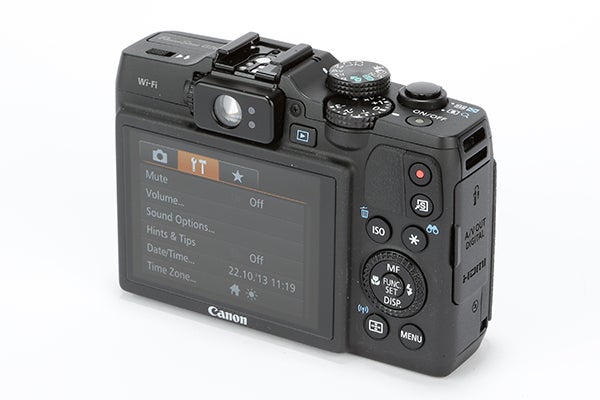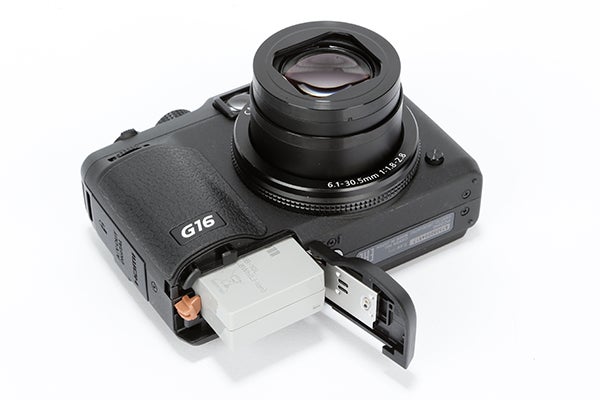Canon PowerShot G16 Review
Canon PowerShot G16
Still one of the best advanced compacts you can buy

Sections
- Page 1 Canon PowerShot G16 Review
- Page 2 Design and Performance Review
- Page 3 Image Quality and Verdict Review
Verdict
Pros
- Solid build
- Strong feature-set
- Impressive performance
- Excellent image quality
Cons
- High price tag
- Fixed LCD screen disappointing
Key Specifications
- 12.1MP BSI CMOS sensor; 3-inch, 921k-dot LCD screen; 5x optical zoom, 28-140mm f/1.8-2.8; ISO 80 – 12800; 1920 x 1080 @ 30fps
What is the Canon PowerShot G16?
It’s fair to say that Canon’s G-series of PowerShot compacts has long-held a place atop the advanced compact market, forcing other manufacturers to often resort to imitation to try to keep pace. The latest model is the G16, and it marks 13 years in this prolific range. The model stays true to what has made the G-series so successful, namely featuring a larger than average sensor alongside solid build and a fast lens. Is this combination still a winning one, and enough to keep the G series atop the advanced compact tree? Let’s take a closer look…
SEE ALSO: 10 best cameras you can buy right now
Canon PowerShot G16: Features
As you’d expect from a series that has proved so successful over the years, when it comes to a new model being released in the series it’s often a case of incremental changes rather than a complete overhaul.
This certainly rings true with the Canon G16, as large-scale changes are few and far between. For example, the G16 features a sensor that measures in at 1/1.7-inches with a 12.1MP resolution and back-side illumination technology, much as the G15.
One of the main areas of improvement is with regards to the image processing capabilities. The G16 now features Canon’s latest DIGIC 6 processor which, Canon claims, delivers improved image processing as well as a 50% improvement in AF speed.

The real new headline feature, however, is the addition of Wi-Fi. Although it’s not as comprehensive as some other configurations, that found on the G16 allows for connection to either smartphone or tablet, or desktop or laptop. It does so through a free app on the former, or through a home Wi-Fi network for the latter, and once connected it allows for the wireless sharing of images, although there’s no facility to remotely control to camera.
The G16’s video capabilities also sees something of an improvement, as it now supports full HD 60fps capture as well as an automatic wind noise filter and in-camera video transcoding.
Outside of the new headline features, the G16 will have an air of familiarity to those acquainted with the G15. It has the same optical capabilities as seen before – this takes the shape of a 5x optical zoom covering an equivalent focal length of 28-140mm and featuring a welcome maximum aperture range of f/1.8 – 2.8, meaning more versatility when shooting in low light conditions.
The G16 also retains the same LCD screen as seen in its predecessor. The screen in question measures in at 3-inches, has a resolution of 922k-dots and features an anti-glare coating. Unfortunately the screen itself is fixed, and you can’t help but feel that a vari-angle unit would be preferable for a camera such as the G16. Having said that the last camera in the series to feature such a screen was the G12, so it’s unlikely to make a reappearance any time soon.

A welcome feature that’s retained is the camera’s optical viewfinder. While it’s not the largest or highest-specified of optical viewfinders, it does feature dioptre adjustment as well as zooming with the movement of the camera’s lens
As well as offering full PASM shooting control, the G16 also offers a range of automated shooting modes for the more novice photographer, while a range of effect filters are also on offer.

